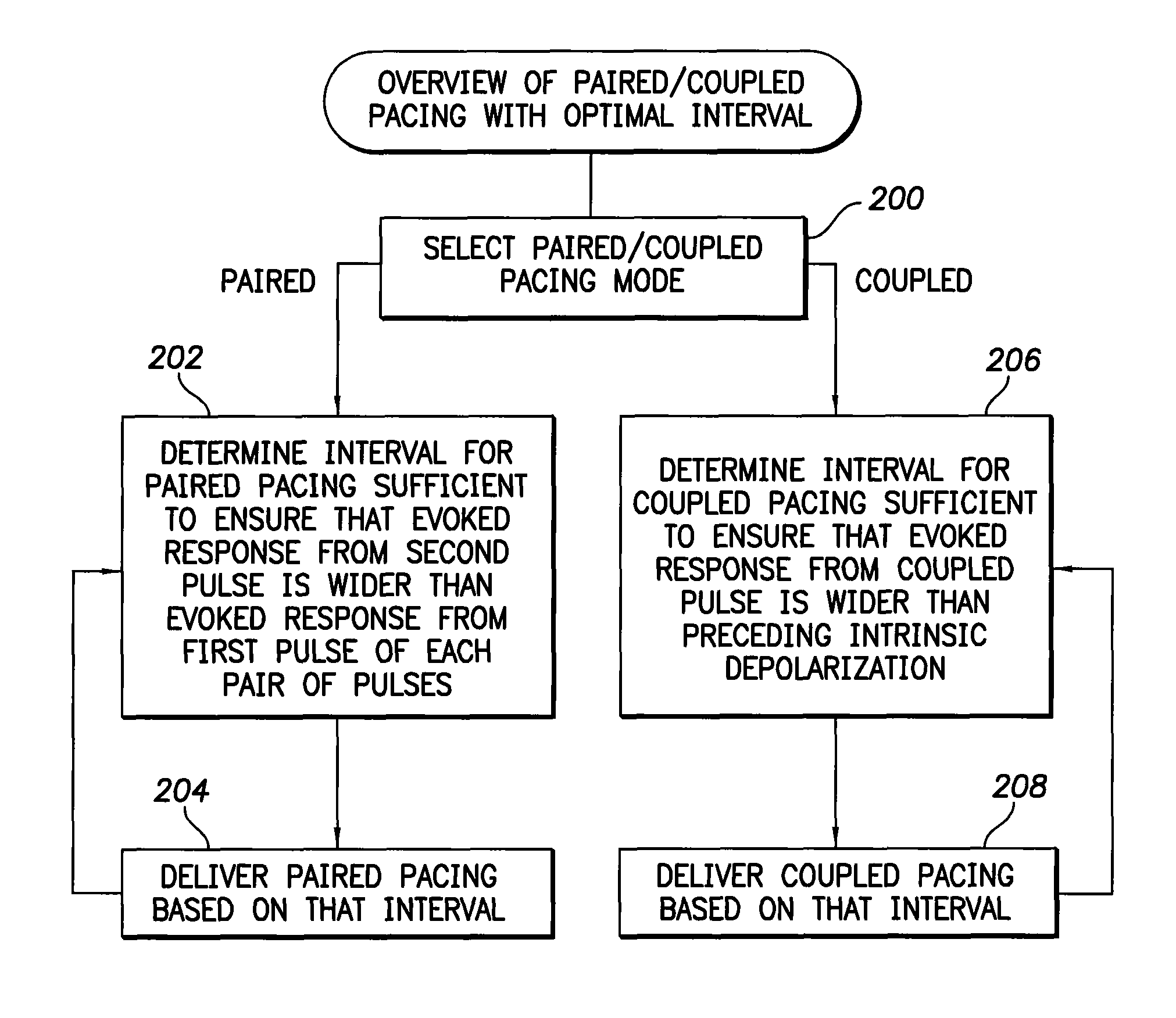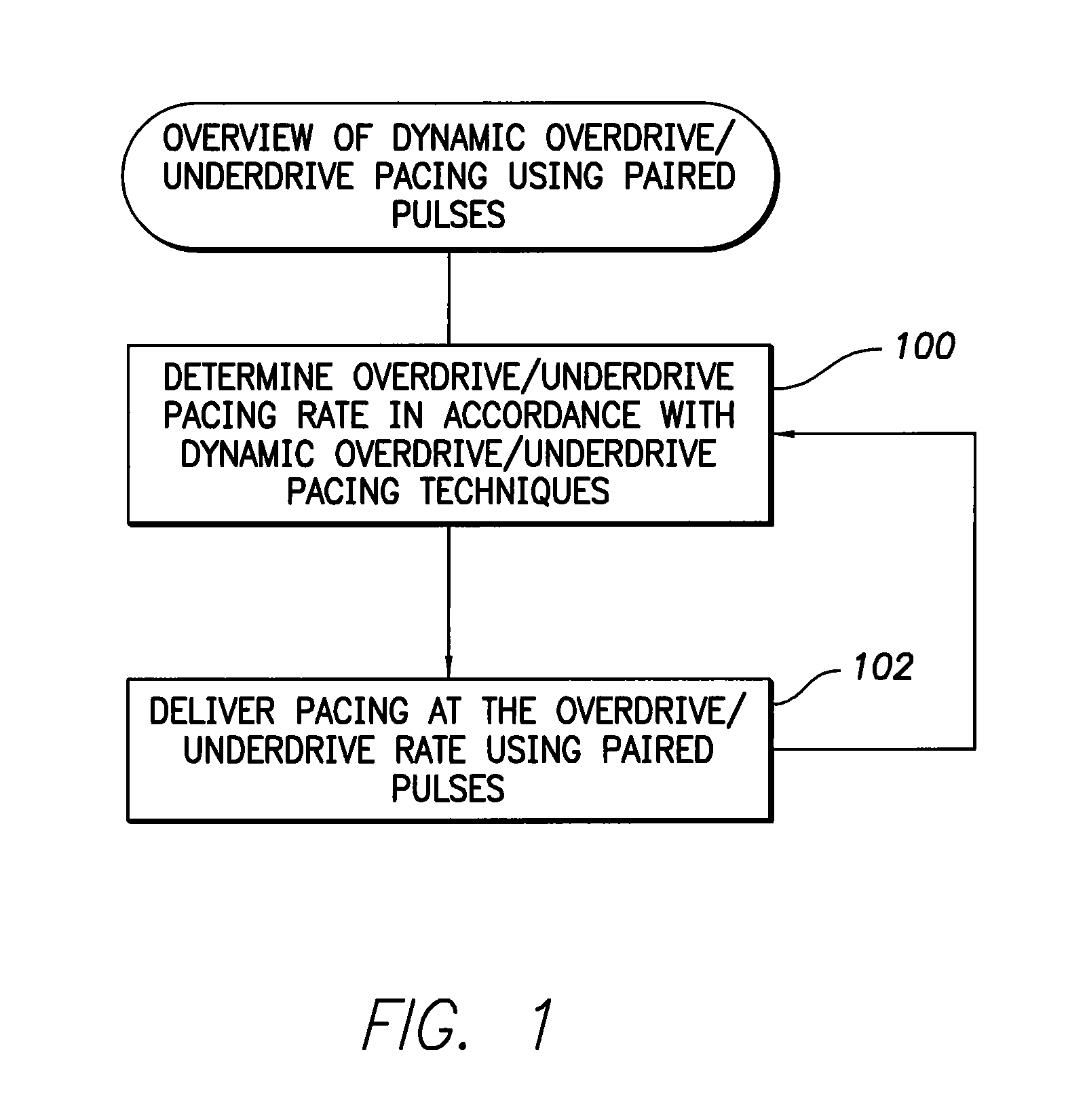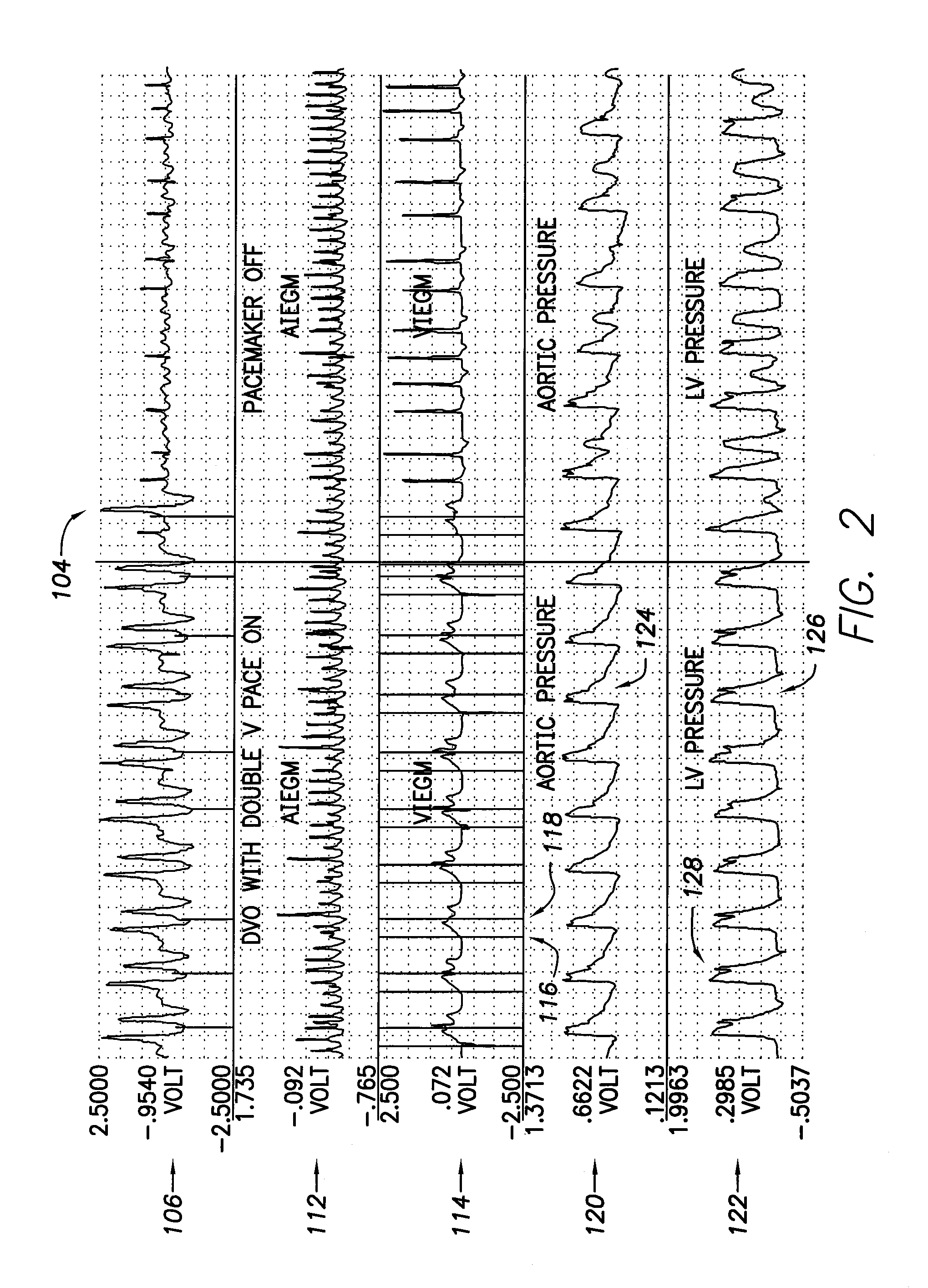Systems and methods for paired/coupled pacing and dynamic overdrive/underdrive pacing
a dynamic overdrive and underdrive technology, applied in the field of implantable cardiac stimulation devices, can solve the problems of refractory period and slow heart rate, and achieve the effects of prolonging refractory period, prolonging refractory period, and reducing refractory period
- Summary
- Abstract
- Description
- Claims
- Application Information
AI Technical Summary
Benefits of technology
Problems solved by technology
Method used
Image
Examples
Embodiment Construction
[0027]The following description includes the best mode presently contemplated for practicing the invention. This description is not to be taken in a limiting sense but is made merely for the purpose of describing the general principles of the invention. The scope of the invention should be ascertained with reference to the issued claims. In the descriptions that follow, like numerals or reference designators will be used to refer to like parts or elements throughout.
[0028]Briefly, techniques for performing paired pacing in conjunction with dynamic overdrive / underdrive pacing are discussed with respect to FIGS. 1-2. Techniques for performing paired / coupled pacing with optimal inter-pulse intervals are discussed with respect to FIGS. 3-6. Exemplary techniques for performing paired pacing in conjunction with dynamic ventricular overdrive / underdrive pacing during AF while also using optimal inter-pulse intervals are discussed with respect to FIG. 7. An overview of an exemplary implantab...
PUM
 Login to View More
Login to View More Abstract
Description
Claims
Application Information
 Login to View More
Login to View More - R&D
- Intellectual Property
- Life Sciences
- Materials
- Tech Scout
- Unparalleled Data Quality
- Higher Quality Content
- 60% Fewer Hallucinations
Browse by: Latest US Patents, China's latest patents, Technical Efficacy Thesaurus, Application Domain, Technology Topic, Popular Technical Reports.
© 2025 PatSnap. All rights reserved.Legal|Privacy policy|Modern Slavery Act Transparency Statement|Sitemap|About US| Contact US: help@patsnap.com



